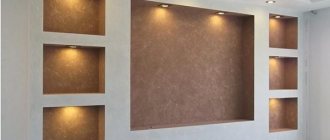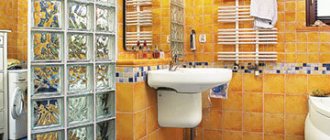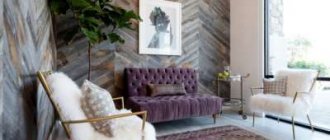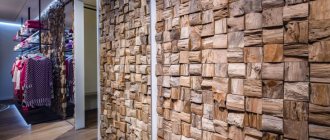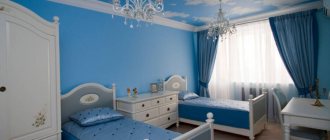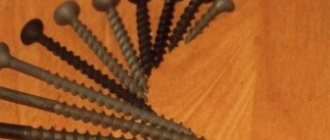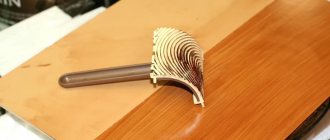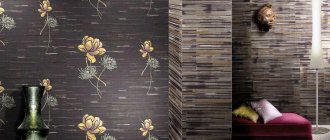Wireless technologies have not yet become widespread. At home, more and more equipment needs to be connected safely and conveniently. Therefore, a pressing problem arises: people do not know how to hide the wires from the TV on the wall beautifully.
How to remove wires in the interior
Any room in a modern apartment is equipped with sockets. Electricians consider the location of one outlet per 6 square meters sufficient. m area. However, the level of technical equipment is constantly growing, and it is advisable to install socket blocks, especially in places where computers and TVs are located. Naturally, clusters of forks and a web of wires do not always look aesthetically pleasing. Therefore, residents of houses are thinking about how to remove the wires from the TV. And increasingly, preference is given to the hidden option of installing cables and wires.
Laying cables in the wall
To install and watch TV, you no longer need to connect one cable and a pair of wires. The technical features of modern television devices provide access to the network, the ability to connect DVD players, and home theater.
Naturally, such a huge number of cables can be properly masked only by laying them in grooves. This is a practical and neat option to remove the wires so that they are not damaged by pets and the communications become “invisible”. A special advantage is that the cords are brought out into a single console, which contains all the outputs necessary to connect equipment. To do this, you do not need to trench the walls throughout the apartment: it is enough to draw a groove to the baseboard and remove all communications into it.
The easiest way to do electrical work is during repairs. Already at the initial stage, it is important to decide where on the wall the TV will be located. It is also necessary to know what type of bracket will be used to mount the equipment, since mounting designs can have different shapes and dimensions. If this is not taken into account, then later the cords will stick out from behind the TV body or the bracket design will interfere with connecting communications.
It is also recommended that cords and cables be routed through a protective sleeve. This will increase the cost of repair work, but will simplify the operation of the equipment in the future. After all, to replace the wiring or repair it, you no longer need to open the wall.
Features of the TV location
It is best to ask this question in advance, think through and design the installation of the device and its terminals. The standard rule is one TV outlet and three regular outlets behind the plasma monitor. They connect the TV itself, an Internet adapter, an Xbox or another game console if necessary.
All these outputs will be securely hidden behind the plasma monitor; the sockets must be installed 9-12 cm above or below the edge of the plasma.
If there is a TV stand under the plasma, on which you can place other types of equipment, then sockets behind it will also not hurt.
At a height of 40 cm from the floor covering, place a single block of 3-4 sockets, even if they are not useful now, it is better to be safe for the future. Extra sockets will eliminate problems with wires, cables and additionally included carriers.
How to properly hide the wires coming from the TV on the wall if the renovation has already come to an end? When the repair is complete, all cables can be carefully hidden in a box with a niche and carefully secured to the TV. Then it all depends on your imagination and preferences in decorating the box for the interior item. It can be disguised to match the color of the wall, wallpaper, or, conversely, highlight it with a bright shade.
When television equipment is located opposite a window, it is necessary that the light does not block the picture on the screen. In this case, thick fabric or electric curtains will help. In the second option, you need to prepare another socket in the place where the electronic curtain will hang.
Not all TV models are attached to a wall surface: a lot depends on the model, the weight of the equipment and the material of the wall surface. It is also important to consider the quality and reliability of the fastening bolts. The wall must be strong and able to support the weight of the TV. Ideally, the equipment is attached to a brick or concrete wall.
If the TV will be on a bedside table or coffee table, then the sockets directly behind it are perfect for discreetly plugging them into the network.
Laying cables under the baseboard
Floor skirting boards are a universal option that allows you to hide wires located horizontally. The structures simultaneously perform decorative functions (they close the gap between the walls and the floor) and store/disguise communications. Two types of skirting boards with a cable channel are offered: a profile with a groove in the center and with a base that is completely covered with an insert. Products are produced in plastic, wood and metal:
- Metal skirting boards (galvanized steel and aluminum) are more durable than plastic ones. They protect communications from mechanical damage and electromagnetic radiation, and have a high level of fire safety. Thanks to the different color palette, it is easy to choose a product for the interior;
- plastic ones can have a triangular, rectangular, or shaped section. The advantages are obvious: light weight, wide range of colors, simple installation, easy cutting. Plastic elements are cheaper than metal ones, but are less reliable;
- Cable ducts made of wood are a rare occurrence and, most likely, they will have to be ordered individually. Experts advise installing a wooden plinth if you need to hide no more than two cables. But a huge number of wires can cause a fire. For the same reason, it is not recommended to install veneered MDF skirting boards.
When installing the structure, only the frame is fixed (it is fixed to the wall near the floor). The remaining parts (connectors, external decorative trim) are latched manually. Installing skirting boards does not require special equipment or skills. Therefore, installation can be done independently, without the help of professionals.
Camouflage covers
You can make your own cover for one or several cords at the same time from plastic bags cut into long, narrow strips. A kind of “sleeve” is knitted or crocheted from them, into which all the necessary wiring is inserted. To hide an extension cord with charges in this way, a handbag of suitable size is knitted or sewn.
Some stores offer decorative collapsible plastic covers in the form of tree branches, colored tubes, and shiny snakes. This design does not have the protective properties of cable ducts, but it is acceptable to cover “ugly” wires with it. If desired, a special spiral braid can be purchased - it is flexible, has an aesthetic appearance, and allows you to hide both one element and many wires.
Laying wires in a box and cable channel
If a serious renovation has been made to the apartment, then the residents will not always agree to damage the walls in order to install hidden wiring. A suitable solution to the problem is to use externally fastened cable ducts. Of course, this option can be conditionally considered masking the cords. But manufacturers offer different models of cable channels, which are easy to make part of the interior:
- PVC products are plastic boxes (most often white) with a removable lid that is secured with latches. They fit organically into the design, merge with the color palette of the interior or are a contrasting element;
- MDF models are not popular. However, you can find products that organically complement the decor of the room;
- metal boxes (mostly aluminum) with matte finishes look original in modern styles (loft, minimalism, hi-tech).
The installation principle for all products is the same: the boxes are fixed to the wall using dowels. All communications are well laid out and covered with a protective cover.
If the factory options for external fastening of wires are not suitable, designers offer a non-standard solution - create a box yourself. To do this, planed boards are fixed to the wall, between which communications are carried out. To disguise the box, a decorative overlay is used, which is painted in the desired color.
To the floor
The second way is to hide the cords under the floor. Today in construction stores you can easily buy special skirting boards equipped with a niche for masking the cable. You just need to remove the outer panel, and then remove the wires into this space. Then install the panel back.
The main advantage of this option is efficiency, cleanliness, and simplicity. Work takes up minimal free time. To cover the cords under the baseboard, you don't have to hammer anything. No dirt, etc. Antenna and Internet cables can be placed under the baseboard. With their help, other communications are also masked.
The antenna cable of the TV can also be hidden on the floor, or rather under it. How can I do that? Take a hammer drill, and then make holes in the floor, which will actually be intended for the wires. Use corrugation to create a protective layer, and then you can lay the cords.
When installation is complete, level the floor using a mixture of sand and cement. If the apartment has a wooden floor, then you will need to dismantle the boards and place the wires in a metal tube.
Laying wires under the ceiling in the cornice
The best option for masking wiring and communications is to install a suspended ceiling. However, this is not the best solution to the problem for small spaces, where the height of the apartment is already modest. Therefore, installing a ceiling plinth with a groove for hidden wires will be an excellent way to hide communications, especially when installing an air conditioner. Skirting boards are made from different materials:
- made from polystyrene foam are the most popular. The advantages of the products are obvious: resistance to high humidity and temperature changes, a variety of models of various shapes/sizes, light weight, ease of installation. If necessary, the surface is painted with acrylic paint in any color. Disadvantage: fragility. Therefore, you need to screw in the screws carefully;
- wooden ceiling plinths look unique. Advantages: environmental friendliness, durability, aesthetic appearance. Disadvantages: fire hazard, hygroscopicity (can lead to the formation of fungus);
- In rooms with figured ceilings, it is advisable to install polyurethane moldings. The products do not have special grooves for wires. However, it is possible to place several cords or a television cable in a closed corner between the wall and the ceiling;
- plastic structures are in great demand due to a number of advantages: ease of installation, moisture resistance, fire safety, large selection of color models. Difficulties arise when selecting shades of connecting elements; besides, inexpensive products are very fragile.
Two methods are used to install skirting boards: fastening with glue and dowel installations. For installation with a cable channel, dowel-nails are used. Polystyrene, foam plastic, polyurethane are glued to the ceiling with Moment glue. Cords and cables are fixed along the ceiling using clips or special brackets.
Wire decoration options
A creative solution to the problem of wire placement is not to hide them, but to make them a stylish decorative element. You can play with the external location of communications in various ways. Cable manufacturers take into account such customer desires and offer special multi-colored overlays of interesting shapes for walls (tree branches, plastic hemispheres). Thanks to the clips, you can beautifully depict a non-standard panel on the partition.
Simple and original ideas are to artistically fasten wires on the wall: into necklaces with multi-colored beads, to depict a stylized tree with twigs and birds, or a graphic drawing, as in the photo.
Before decorating the wall and fixing the wires, it is advisable to first draw the outlines of the pattern or the layout of communications on the surface of the partition. An extraordinary option is to hang the cords on a winding and branchy snag installed next to the equipment.
How to remove wires from the Internet
One computer in an apartment is a rare occurrence. The number of gadgets is sometimes difficult to count, especially in large families. Therefore, there is a router in almost every home. If you install the router in the hallway, you won’t have to hide a long cable from the Internet.
Sometimes it happens that you need to lay the cord in a distant room. And a problem arises: how to practically hide the wires from the Internet and cable TV in the corridor. The best camouflage option is fixation under the baseboard.
Sometimes you need to drill into a wall. If the partition is not wide and can be easily drilled, there will be no difficulties. A piece of pipe placed in a hole in the wall will simplify cable installation and subsequent operation of communications.
A suitable option for hiding cords is to lay them along the doorway. In this case, the wire along the corridor is hidden in the ceiling plinth.
To prevent computer and speaker cords from hanging shapelessly under the table, they are passed through special cable channels that are fixed under the tabletop. Or they use special boxes to mask the surge protector and conveniently connect devices.
Various methods and techniques for masking cables and cords make it easier to use equipment and help maintain the stylish design of the room.
Under furniture
Mostly we hide the wires behind the TV. It is clear that if you look closely, all the cords will be visible. However, today you can buy special furniture that allows you to hide all communications.
To a greater extent we are talking about TV stands. They are equipped with special holes in which wires can be placed. It is very comfortable. Not to mention the fact that the cables will not be visible and therefore will not disrupt the interior design. Special headsets, which have an area intended for installing a TV, also allow you to hide the wires.
